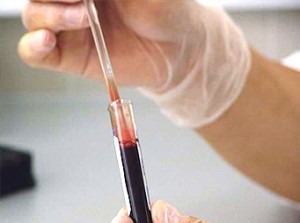Preservation Breeders – Advancements in Genetic Testing
222 – September, 2018
By Peri Norman
 As genetic testing becomes more commonplace, it behooves us to stay abreast of this rapidly changing field and to spend our dollars wisely. Many of us invest significant amounts of money testing our breeding stock and related animals. The availability of genetic testing has exploded subsequent to the completion of the canine genome map.
As genetic testing becomes more commonplace, it behooves us to stay abreast of this rapidly changing field and to spend our dollars wisely. Many of us invest significant amounts of money testing our breeding stock and related animals. The availability of genetic testing has exploded subsequent to the completion of the canine genome map.
There are two basic types of genetic testing for dogs. One option is to test for a specific disease disorder or trait. If you have one or maybe a few tests that you are interested in, there are a myriad of companies that will test for a single mutation or may offer a breed-related panel with a handful of tests at a reduced rate. This worked well during in the earlier stages of commercially available genetic testing, but as the number of traits and diseases that we can test for has sky-rocketed, it is often not the most economical way to obtain relevant information. More recently, another alternative has emerged, known as a high-density genotyping array. These arrays (or SNP chips) query hundreds of thousands genetic markers, evenly spaced across the canine genome. Specific probes target known mutations to provide disease and trait testing; and others provide information on ancestry, inbreeding and diversity. The majority of markers are still uncharacterized. They are perhaps the most important as they provide an unprecedented opportunity for us to contribute directly to greater insight into the genetics of our dogs!
There are several compelling reasons to choose the high-density testing option. That it may be less expensive, depending on your needs, is only the first one. An interesting finding, based on the analysis of high-density genetic panel screenings, is the presence of mutations that were believed to be (1, 2) breed-related across a variety of additional breeds. Imagine my surprise when one of my first pair of high-density tests reported a mutation in the PDK4 gene in one of my Belgian Tervuren pups, Kylie. This mutation, I learned, is associated with dilated cardiomyopathy (DCM) in Doberman Pinschers in the United States. However, further research revealed that not only has this PDK4 mutation been found to be unassociated with DCM in other breeds, it is not predictive in the European population of Doberman Pinschers.
Click here to read the complete article222 – September, 2018
Short URL: http://caninechronicle.com/?p=150757
Comments are closed











